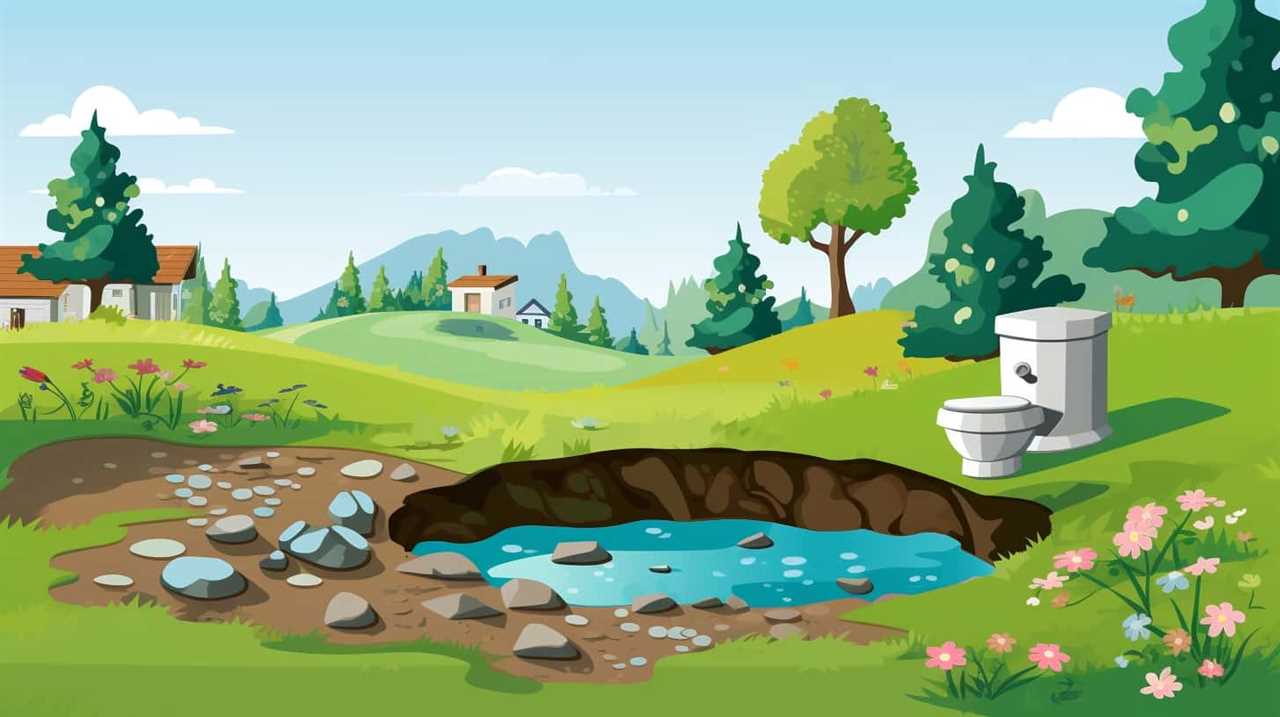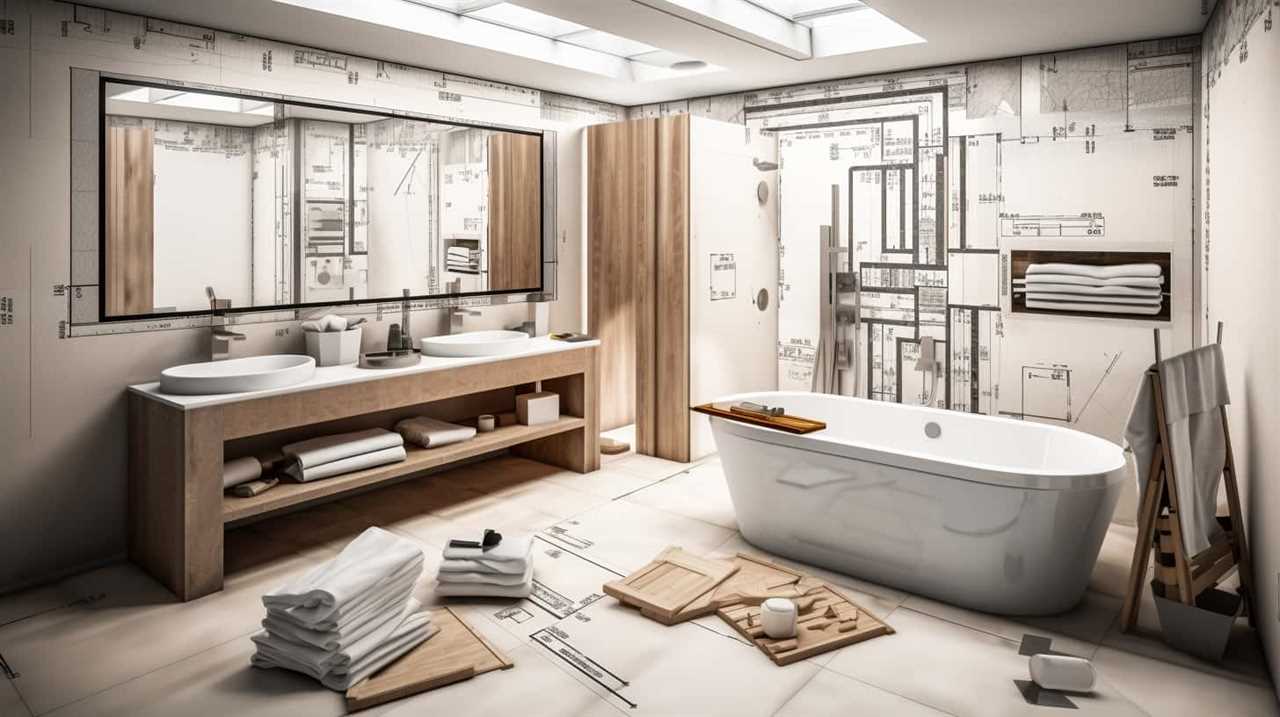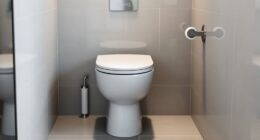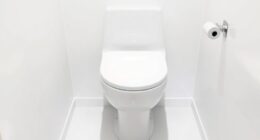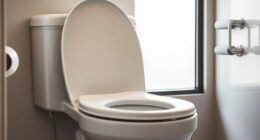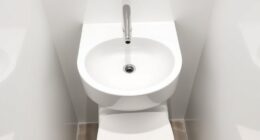Are you aware that bathroom mold can present significant health hazards? Indeed, specific types of mold growth in bathrooms can be unsafe if not addressed.
As we strive for mastery over our living spaces, it’s important to understand when bathroom mold becomes a cause for concern. In this article, we will explore the different types of bathroom mold, the signs of dangerous mold growth, and the steps we can take to prevent and eliminate it.
Let’s dive in and ensure our bathrooms are a safe haven.
Key Takeaways
- Black mold (Stachybotrys chartarum), green mold (Aspergillus), and pink mold (Aureobasidium) are types of bathroom mold that can be dangerous.
- Signs of dangerous mold growth include peeling paint, a musty odor, condensation dripping from pipes, and evidence of water damage in the bathroom.
- Long-term exposure to bathroom mold can release microscopic spores and pose health risks, especially for individuals with pre-existing respiratory conditions.
- To prevent and eliminate bathroom mold, ensure proper ventilation, regularly clean using mold-preventing cleaners, fix leaks promptly, avoid leaving wet towels or clothes in the bathroom, and use a dehumidifier to reduce humidity levels.
Types of Bathroom Mold
In the bathroom, there are various types of mold that can pose potential health risks. One of the most concerning types is black mold, scientifically known as Stachybotrys chartarum. This particular mold is known for its dark greenish-black appearance and its ability to produce mycotoxins, which can be harmful to humans. Black mold thrives in damp and humid areas, making the bathroom an ideal environment for its growth.
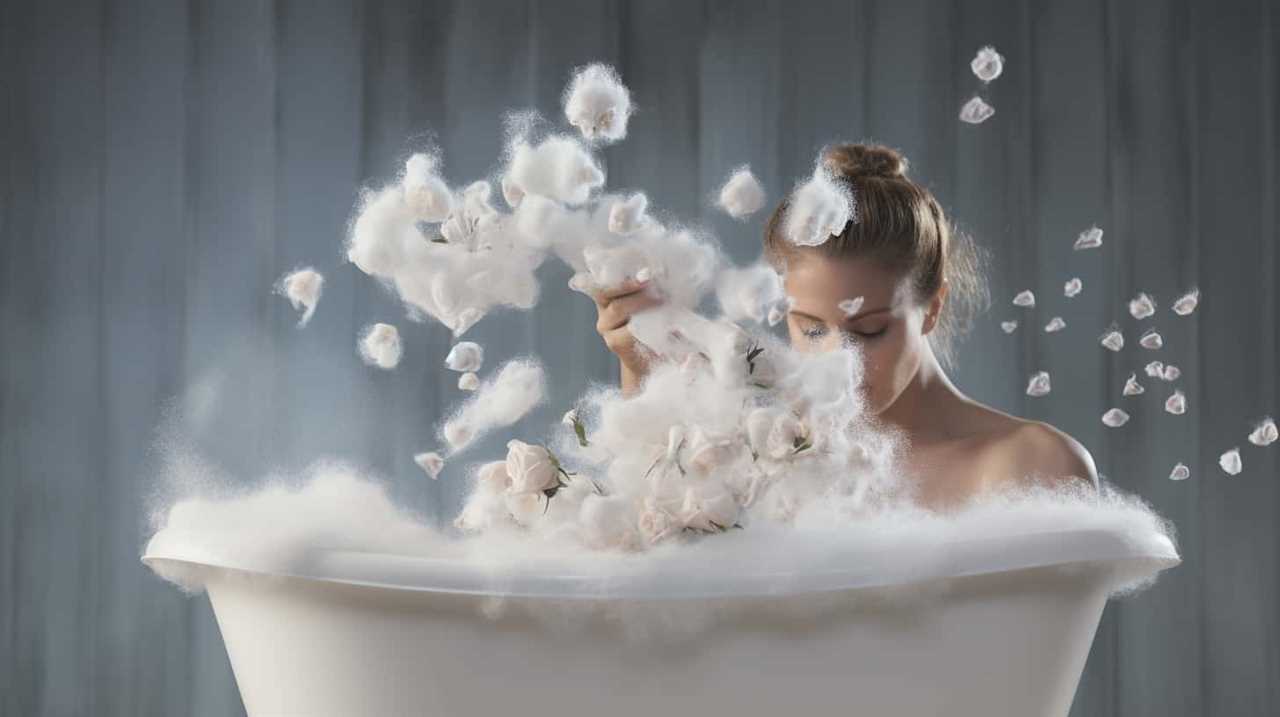
Other common bathroom molds include Aspergillus, Cladosporium, and Penicillium. These molds can be found on surfaces such as shower curtains, tiles, and grout. While they may not be as dangerous as black mold, they can still cause respiratory issues, allergies, and other health problems, especially in individuals with weakened immune systems.
Regular cleaning and proper ventilation are crucial in preventing the growth of these molds in the bathroom.
Signs of Dangerous Mold Growth
We can identify dangerous mold growth in the bathroom by recognizing certain signs. Here are some common bathroom molds and how to identify them:
- Black mold (Stachybotrys chartarum): This type of mold is dark greenish-black in color and has a slimy texture. It usually grows in damp areas with high humidity, such as bathrooms. Black mold can cause severe health problems, including respiratory issues and allergies.
- Green mold (Aspergillus): Green mold is a common type of bathroom mold that appears as a greenish discoloration on surfaces. It thrives in areas with moisture and poor ventilation. Although not as dangerous as black mold, it can still trigger allergies and respiratory problems.
- Pink mold (Aureobasidium): Pink mold is a common bathroom mold that appears as pinkish or reddish patches. It typically grows on damp surfaces, such as shower curtains and grout lines. While pink mold isn’t as harmful as black mold, it can still cause respiratory issues and skin irritation.
Identifying these dangerous mold types is crucial to prevent further health risks associated with bathroom mold.

Health Risks Associated With Bathroom Mold
As we continue our discussion on bathroom mold, it’s important to be aware of the health risks associated with its presence.
Long-term exposure to bathroom mold can have serious implications for our respiratory system. Mold releases microscopic spores into the air, which can be inhaled and cause a range of respiratory problems. These may include coughing, wheezing, shortness of breath, and nasal congestion.
Individuals with pre-existing respiratory conditions, such as asthma or allergies, are particularly vulnerable to the effects of bathroom mold. Prolonged exposure may also lead to the development of more severe respiratory conditions, such as chronic bronchitis or fungal infections in the lungs.
Therefore, it’s crucial to address bathroom mold growth promptly to minimize the risk of long-term health complications.
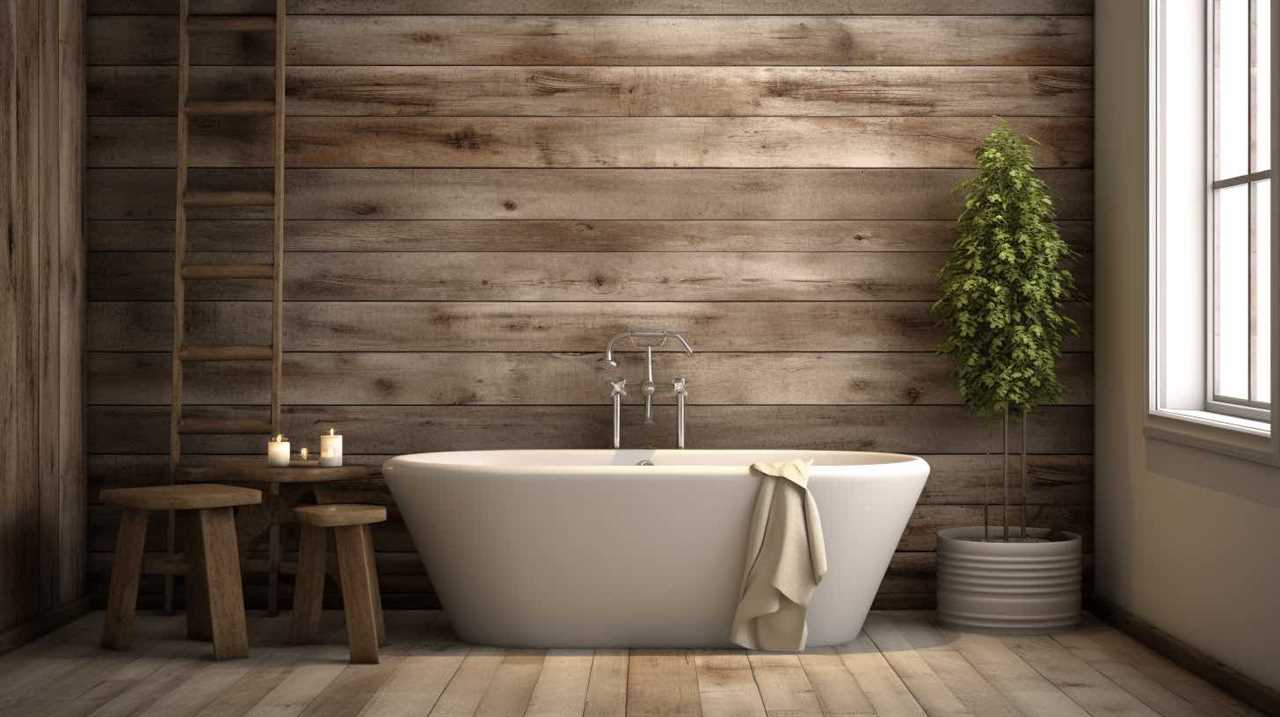
Preventing Bathroom Mold Growth
To minimize the risk of bathroom mold growth, it’s essential to take proactive measures in maintaining a clean and dry environment. Here are some DIY mold prevention techniques that can help you keep your bathroom mold-free:
- Ventilation: Ensure proper ventilation in the bathroom by using exhaust fans or opening windows during and after showering. This helps to reduce moisture levels and prevent mold growth.
- Regular cleaning: Clean your bathroom regularly using mold-preventing cleaners. Pay special attention to areas prone to moisture, such as shower curtains, tiles, and grout lines.
- Fix leaks: Promptly repair any leaks in pipes, faucets, or showers. Moisture from leaks provides an ideal breeding ground for common bathroom mold.
By implementing these preventive measures, you can significantly reduce the chances of bathroom mold growth and maintain a clean and healthy environment.
Now, let’s explore effective ways to eliminate existing bathroom mold.
Eliminating Bathroom Mold
To effectively eliminate bathroom mold, it is important to address the root cause of moisture and implement targeted cleaning techniques. Mold thrives in damp and humid environments, so it is crucial to identify and fix any sources of water leakage or excessive moisture in your bathroom. Common causes of bathroom mold growth include inadequate ventilation, plumbing leaks, and improper waterproofing. Once the source of moisture is resolved, you can focus on removing the existing mold. Effective mold removal techniques include scrubbing the affected surfaces with a mixture of bleach and water, using a mold-killing cleaner, or employing natural remedies such as vinegar or hydrogen peroxide. It is essential to wear protective gear, such as gloves and a mask, when handling mold to avoid any health risks. Regular cleaning and maintenance are key to preventing mold from reoccurring in your bathroom.
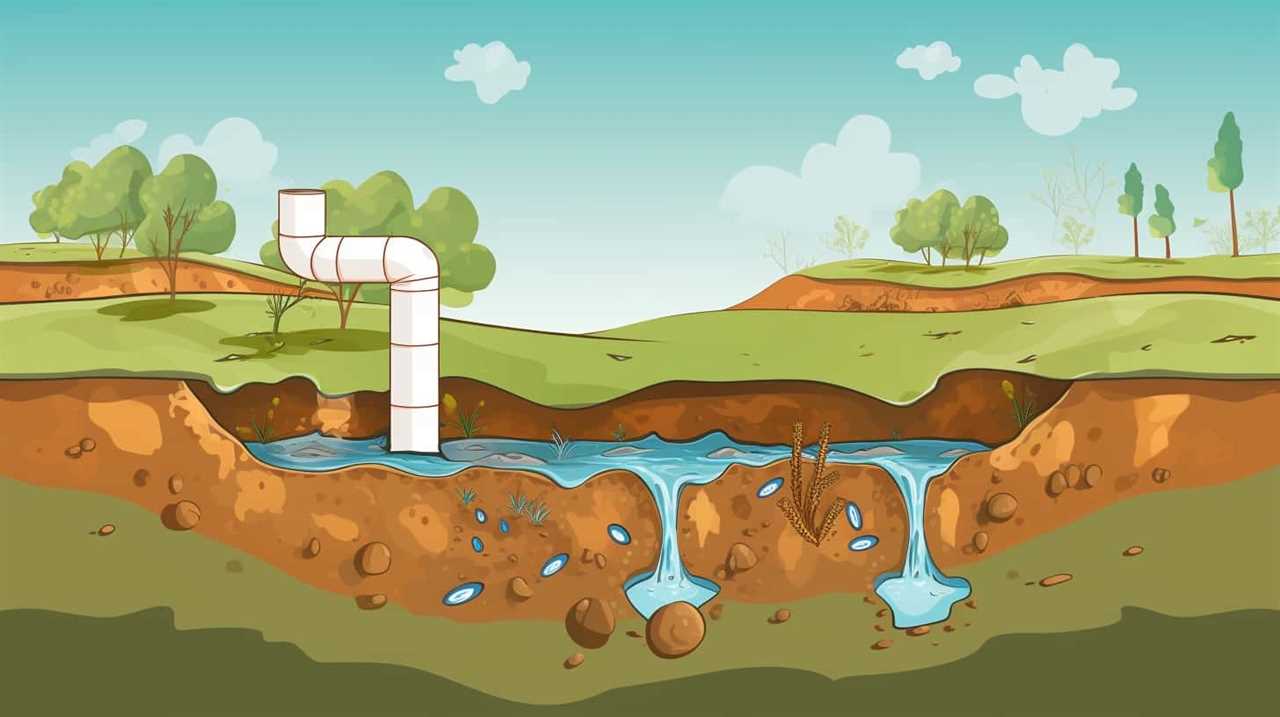
| Mold Removal Techniques | Common Causes of Bathroom Mold Growth |
|---|---|
| Scrub with bleach and water | Inadequate ventilation |
| Use a mold-killing cleaner | Plumbing leaks |
| Employ natural remedies (vinegar, hydrogen peroxide) | Improper waterproofing |
| Wear protective gear | High humidity levels |
| Regular cleaning and maintenance | Poor ventilation of shower or bath |
Frequently Asked Questions
Can Bathroom Mold Cause Long-Term Health Problems?
Bathroom mold can cause long-term health problems, such as respiratory issues and allergic reactions. It is important to address mold promptly to minimize the health risks and potential long-term effects.
How Quickly Can Bathroom Mold Spread Throughout the House?
Bathroom mold prevention is crucial to avoid its spread throughout the house. Effective cleaning methods, such as regular scrubbing and proper ventilation, can limit its growth. Understanding the dangers of bathroom mold is essential for maintaining a healthy living environment.
Is It Necessary to Hire a Professional to Remove Bathroom Mold?
Hiring a professional for bathroom mold removal is not always necessary. We can try DIY methods first, such as using bleach or vinegar to clean the affected area. However, consulting an expert may be wise.
Are There Any Natural Remedies to Prevent Bathroom Mold Growth?
There are several natural remedies and DIY solutions available to prevent bathroom mold growth. These methods can be effective in reducing moisture, improving ventilation, and using natural cleaning agents to discourage mold growth.
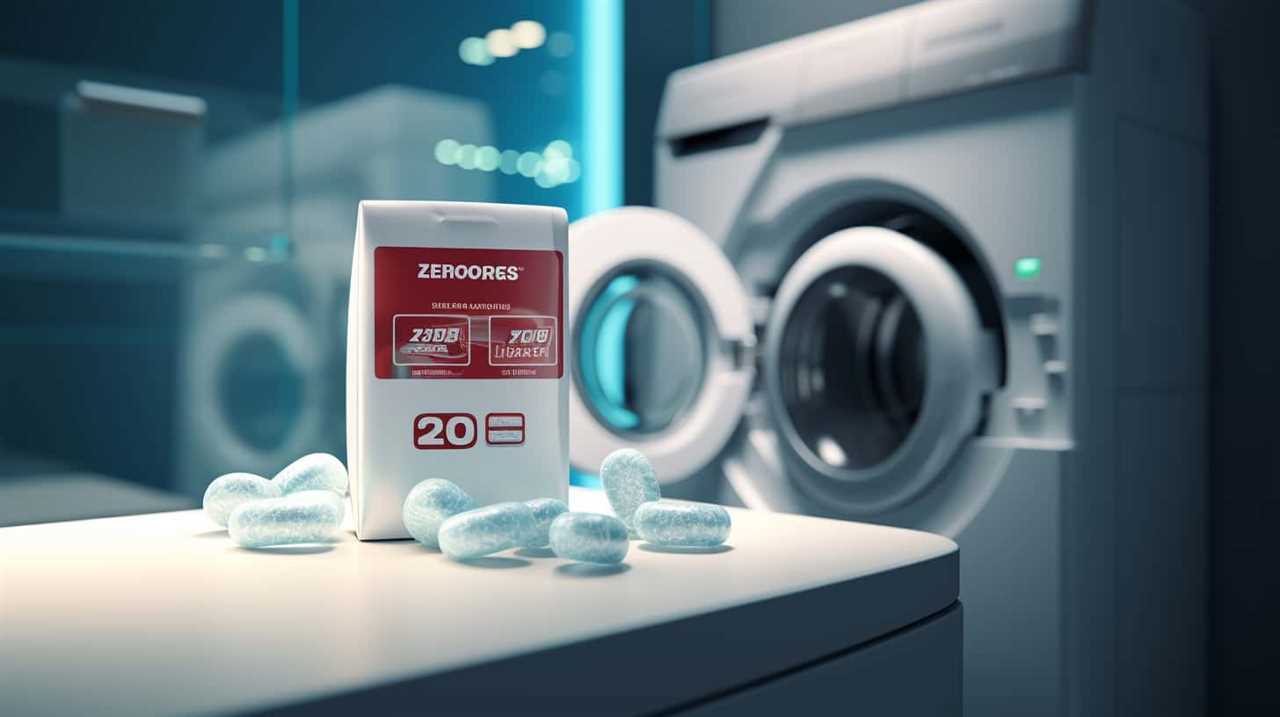
Can Using a Bathroom Exhaust Fan Help Prevent Mold Growth?
Using a bathroom exhaust fan is essential for preventing mold growth. It helps with bathroom ventilation and humidity control, reducing the chances of mold formation. Regular use ensures a healthy and mold-free environment.
Conclusion
In conclusion, bathroom mold can pose serious health risks if left unchecked. It’s important to be aware of the signs of dangerous mold growth, such as a musty smell, discoloration, and respiratory issues.
By taking preventative measures, such as reducing moisture and improving ventilation, we can minimize the growth of mold in our bathrooms. If mold is already present, it’s crucial to promptly eliminate it using appropriate cleaning products and techniques.
Remember, a clean and mold-free bathroom is essential for maintaining a healthy living environment.




